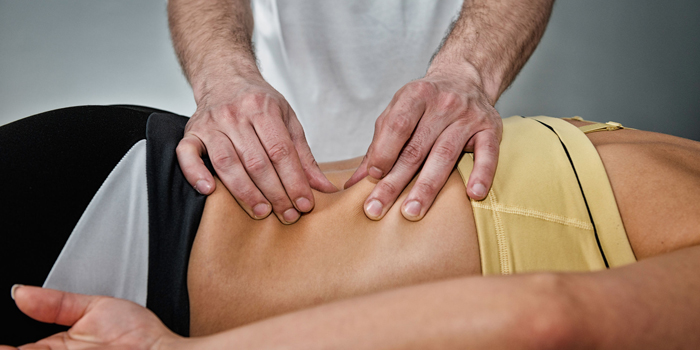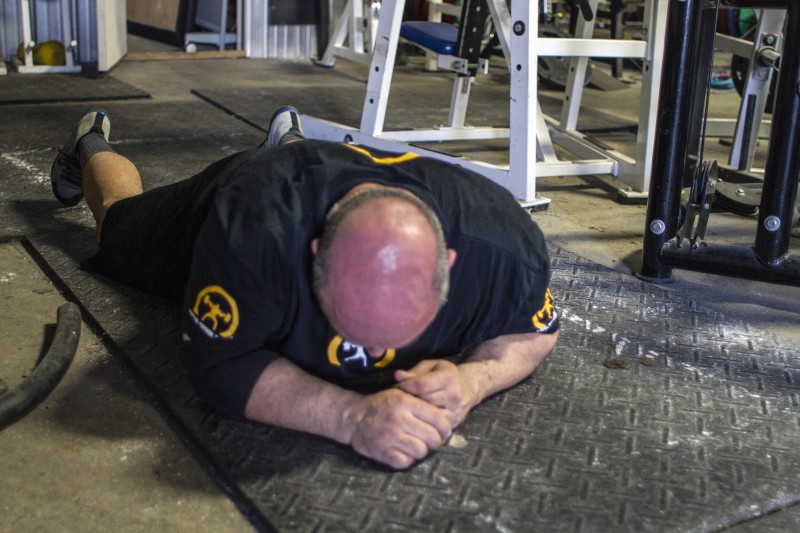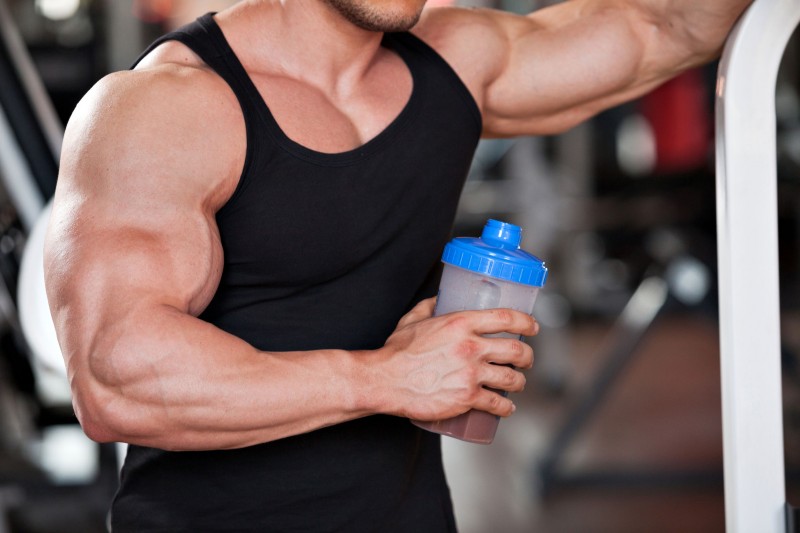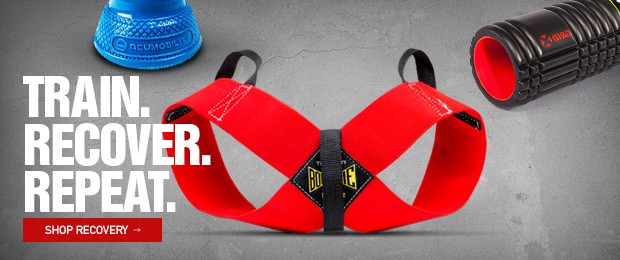
Training, and the many variables that we choose to manipulate within it, take place for one sole purpose: to improve performance, whether this be improved daily living, an athletic endeavor, or another goal. This is the reason we choose to either increase or decrease training volume, manipulate the rest and set scheme, vary the exercise dependent upon the cycle we are in, and so forth. However, along with this, there are many variables outside of the direct training regimen that many individuals tend to incorporate in some form or fashion, specifically recovery modalities, all in the name of improving performance.
Far too often we tend to implement these methods without much understanding as to their physiological impact. This being so, this article will look at three frequently-implemented recovery strategies which have recently been scrutinized and take a mechanistic look as to whether this increased level of scrutiny is appropriate. The three areas to be looked at are anti-inflammatory interventions (NSAID/ice baths), foam rolling (or any type of mechanical pressure to improve tissue quality), and nutrition (specifically protein timing).
Photo credit: mihtiander © 123RF.com
Ice Baths and Anti-Inflammatories
Ice baths have been subjected to a large amount of criticism as of late, and rightfully so. As will be a key theme throughout this article, expediting the recovery process is not necessarily beneficial. The complex adaptational process takes time. This being so, while truncating this recovery time may seem advantageous acutely, it may be inhibiting sought-after adaptations chronically. Let’s look at the science.
The first place to look is within the muscle fiber. As to not get bogged down with too much science, what needs to be understood here is that there is one key anabolic protein within the muscle fiber that, when active, causes an increase in protein synthesis: the mechanistic target of rapamycin (mTOR). Researchers will often measure its downstream protein p70s6k as to give insight into the activity of mTOR.
It has been demonstrated that 10 minutes of cold water immersion (CWI) following resistance training decreases the overall activity of p70s6k. Thus, CWI decreased overall protein synthesis within the muscle fiber. Further, it was demonstrated that CWI decreased satellite cell activity function, which is a further demonstration as to the decreased anabolic effect as initiated by CWI. This decrease in satellite cell activity can directly impact the myonuclei content within the given muscle fiber and subsequently inhibit hypertrophy.
RECENT: The Benefits of Concurrent Training
So, why does CWI decrease the anabolic effect following a resistance training session? This is still up for debate, but it is my opinion that it is due to the decreased blood flow to the specific muscle which is under the influence of CWI. It is often forgotten that circulating cells have an anabolic effect upon the muscle fiber. Two of specific interest are the bone marrow-derived cell and leukocytes.
Bone-marrow derived cells and leukocytes are recruited to the damaged muscle via inflammatory markers termed chemokines, coupled with increased blood flow. These chemokines are released in the blood and recruit the above-mentioned cells (leukocytes and bone marrow-derived cells). However, the implementation of CWI decreases blood flow and subsequently reduces the number of bone marrow-derived cells and leukocytes, leading to a decreased anabolic effect and regenerative properties.
Taking this into consideration, is it wise to utilize CWI immediately following training? If your goal is to gain muscle, then it is proposed here to minimize exposure to such a stimulus.
The counter to this argument is the idea that implementing CWI during rigorous bouts of training, such as two-a-days during the American Football preseason, will reduce soreness and inevitably increase performance for the following practice. This, however, has been shown not to be the case. It was recently demonstrated that CWI not only had negligible impact on inflammatory markers, but it also did not decrease the perception of soreness. This being so, CWI appears to have a placebo effect upon those who swear by its implementation. But remember, the placebo effect is a very real phenomenon and abrupt termination may not be a good idea either.
Interestingly, similar to CWI, the use of nonsteroidal anti-inflammatory drugs (NSAID) have been demonstrated to acutely decrease satellite cell activity following a training intervention. Moreover, chronic use of NSAIDs was shown to decrease the translational apparatus within the muscle fiber, which is necessary for proper control of protein synthesis. Lastly, it was recently shown that muscle strength characteristics were attenuated following high levels of NSAID intake.
This being so, it appears clear that blunting the natural acute inflammatory response for an extended period of time, as is the case with chronic NSAID and CWI implementation, is unwise for long-term adaptations. Not only has this been demonstrated to attenuate the hypertrophic effect of training but, surprisingly, it also was demonstrated to decrease the overall strength adaptations. Thus, it is recommended to implement NSAIDs and CWI with caution.
Foam Rolling
The implementation of mechanical pressure as to improve tissue quality prior to or following an exercise training bout has become increasingly popular following the emergence of a style of training (I’ll refrain from using the name) which advocates “smashing” techniques on the muscle. This being so, a large number of everyday gym-goers and athletes implement the use of a PVC pipe, foam roller, and/or lacrosse ball. Thus, the technique warrants an in-depth look into the responses which come about, as well as the possible negative side effects.
Foam rolling and the implementation of mechanical pressure as to effect tissue-quality has been widely accepted as important and required in order to perform properly during a workout and/or to adequately recover following a workout. I will briefly touch on two primary issues that I find with this, specifically reliance on a certain intervention and the inability to differentiate among the degree of mechanical pressure implemented.
Many well-known organizations utilize a system termed “track-side therapy.” This may sound familiar if you are privy to the work of the late Charlie Francis. Track-side therapy's primary thesis is one of implementing a specific and relatively quick therapeutic intervention as to acutely alter various musculoskeletal or neuro-biological parameters so that the individual can perform as soundly as possible during that given training session.
MORE: Foam Rolling: Mechanical Pressure and Its Performance Implications
Track-side therapy can be incredibly important. However, an area that I feel can be detrimental to performance is not the therapeutic intervention itself but rather the athlete's or client’s reliance on said intervention. Far too often, following consistent implementation of some form of mechanical pressure prior to training, if for some reason that specific stimulus is missing (say the person who usually performs the therapeutic intervention prior to training is homesick or a new gym that you go to does not have a foam roller), what tends to happen? The individual will more than likely suffer due to an over-reliance on that specific intervention. Thus, while these specific therapeutic modalities may be incredibly beneficial, it is necessary to prepare for Plan B.
Looking more at the neural and physiological effects of mechanical pressure, it must be understood that the degree, direction, and duration of the mechanical stimulus will dictate the overall response of the muscle and the surrounding tissue. This being so, an indiscriminate application of, say, a PVC pipe or very dense foam roller, may cause drastic alterations at the cellular and molecular level that a softer foam roller will not cause. This is my primary beef with the implementation of self-applied mechanical pressure before or after training: the majority of athletes and gym-goers feel that if it’s not hurtin', it’s not workin'.
Before training, when using a foam roller, your goal may be to alter the tissue quality as to increase the range of motion. If, however, you use a very dense material, you may actually cause an immediate inflammatory response along with decreased neural drive leading to a hypotonic effect within the muscle. Similarly, following the training bout, you may choose to use a soft foam roller which may alter the fibroblast function from one of inflammatory to anti-inflammatory. As mentioned above, the immediate inflammatory response following training is necessary as to recruit a multitude of circulating regenerative properties.
However, if used appropriately, mechanical pressure, either self-implemented or that of a therapist, can be incredibly rewarding. A recent study demonstrated that, following a hands-on therapeutic intervention, the intracellular signaling protein Focal Adhesion Kinase (FAK) was increased. FAK is a key anabolic signaling protein within the muscle fiber leading to an increase in the protein synthesis master regulator mTOR, Cyclin D1, which leads to an increase in ribosome biogenesis (increasing translational capacity and long-term hypertrophy), and reinforced focal adhesions at the muscle fiber membrane as to enforce efficient muscle force transmission.
Lastly, an area that I feel is most important in relation to the necessity for proper implementation of manual therapy is the effect that it has on the extracellular matrix (ECM). It has been demonstrated that myotubes sense their mechanical microenvironment leading to their differentiation into striated muscle. For example, it was shown that regardless of the mechanical environment that myoblasts were placed on, they would still differentiate into myotubes. However, unless the mechanical properties of the extracellular matrix were of specific stiffness, myosin and actin striations did not occur revealing the necessity for the proper extracellular matrix environment.
Our muscles have already gone through this developmental differentiation process. However, the ECM relative stiffness will still alter gene expression due to the direct connection from the ECM properties (collagen/laminin/fibronectin) to the chromatin of which encompasses our DNA. If we have poor tissue quality such as inadequate amount of hyaluronic acid and/or collagen quantity, this can alter ECM stiffness, affecting cytoskeletal dynamics and subsequently gene expression via impact on chromatin structure.
This being so, the utilization of foam rolling or any kind of mechanical pressure needs to be wisely implemented as to have a proper ECM environment, cytoskeletal dynamics, and chromatin structure as to properly influence gene expression. Make sure your athletes do not rely on this form of therapy. Further, make sure you and/or your athletes understand the specific nature as to how the body responds to the therapeutic intervention. There is no need to go into detail concerning chromatin function, but inform them of the general overview. Indiscriminately implementing a therapeutic intervention without the necessary investigation as to its overall impact on both the microscopic and macroscopic level of the body will inevitably lead to less than desired outcomes.
Photo credit: fotomircea © 123RF.com
Protein Timing
The timing of nutrient consumption following an exercise bout has been debated for a considerable number of years. There are usually two parties that make up this discussion: the group that propagates the necessity to ingest nutrients immediately following training to stay within the “anabolic window,” and the other group that believes that, regardless of timing, as long as you have an efficient amount of protein throughout the day, you'll be fine. We’ll take a look at both of these viewpoints and try to come to a reasonable conclusion. Let’s start with the "protein manufacturers" of our body.
Ribosomes are the protein manufacturers within our muscle fibers, which synthesize new protein. We lift weights, our individual muscle cells receive this stimulus, this stimulus recruits various signaling proteins (which inevitably lead to transcriptional and translational regulators) and, subsequently, a specific gene is synthesized from mRNA to protein. The interesting thing about ribosome dynamics and its role with nutrient timing is that it recently was shown that consuming a protein-rich meal immediately following a training bout increased signaling proteins, which are known to increase ribosome biogenesis.
Further, it has often been postulated that translation efficiency (amount of protein synthesis per mRNA) is the rate-limiting determinant concerning protein synthesis. However, much work as of late has given credence to the role that translation capacity (total amount of ribosomes) has on hypertrophy. This being so, it is very important to investigate the role that nutrient implementation and its timing has on the ability of the muscle fiber to generate new ribosomes (termed ribosome biogenesis).
WATCH: Dr. Eric Serrano SPS Presentation — Eating for Size and the Problem with Protein Shakes
Taking the above into consideration, looking at the very important anabolic signaling protein mTOR, it has been shown that mTOR is localized in a number of places throughout the cell such as the nucleus and the lysosome (we’ll talk about the lysosome later). Within the nucleus, mTOR binds to the rDNA promotor site. This is necessary for the proper synthesis of polymerase I. Polymerase I is necessary for rRNA transcription and subsequent ribosomal biogenesis.
So, why is nutrient timing important for the above to take place? The interesting thing about its position in the nucleus is that it needs adequate nutrient availability to maintain this position. If this is not the case, mTOR disassociates away from the nucleus, causing an inhibitory effect on polymerase I, leading to a reduction in ribosomal biogenesis and subsequent reduction in protein synthesis.
Stepping away from translational capacity and focusing on the impact that nutrient timing has on translation efficiency, one of the most important downstream proteins leading to protein synthesis is the translation initiation factor p70s6k. This specific protein recruit’s a number of factors to the five-cap site of the mRNA sequence to create an “initiation complex” such as EIF4F and EIF4B. This initiation complex is required to recruit part of the ribosome machinery and allow the ribosome to synthesize a new protein.
The above being so, p70s6k proves incredibly important in the protein synthesis apparatus. So, how does nutrient timing effect this signaling protein? It was recently demonstrated that p70s6k was increased 10-fold in the fed state as compared to three-fold in the fasted state following a training session.
Furthermore, it was shown that the anabolic signaling protein AKT was increased six-fold in the fed state as compared to one-fold in the fasted state one hour following training. AKT can indirectly activate mTOR (the protein master regulator) by inhibiting TSC2 (an inhibitor of mTOR).
Lastly, and what I feel to be most important, is the relative positioning of mTOR following an external stressor such as that found with resistance training. mTOR’s primary activator is Rheb. Rheb is localized at the lysosome. mTOR, too, is preferentially localized at the lysosome in the presence of sufficient intracellular amino acid content. Following resistance training, it was demonstrated that the mTOR/Rheb/Lysosome complex translocate to the cell membrane in close proximity to capillaries. This makes sense, as it will increase the likelihood of circulating growth factors, amino acids, and progenitor cells to communicate with mTOR.
While it has not thoroughly been investigated, it is my contention that the mTOR/lysosome translocation to the cell membrane is a transient action and, this being so, there is a specific amount of time that is advantageous in relation to its positioning near the microvasculature and the likelihood of its interaction with circulating anabolic processes such as nutrients from a post-workout meal.
So, while there may not be a 15-minute post-workout window as is often thought, if your goal is to reap the most benefits from training, it may be important to utilize a post-workout meal within an hour of the training session. However, an important caveat to this is that the primary area that nutrient timing plays a role in is hypertrophy. Nutrient timing in relation to the neurological developments following training plays much less of a role.
Conclusion
The implementation of various recovery modalities is an area of great debate and will continue to be so. The complex physiological processes following an external stimulus is fascinating yet quite frustrating. We are only scratching the surface of the ways we can positively impact the homeostatic balance of the body following an intense external stimulus. Everything mentioned above must be taken with a grain of salt. Further research will certainly add more information and, possibly, raise issue with what I have proposed. However, through analyzing the current literature, this is where we are left. Thus, implement nutrient consumption, foam rolling, NSAIDs, and cold-water immersion wisely.
Header image credit: microgen © 123RF.com
References
- Roberts, L. A., Raastad, T., Markworth, J. F., Figueiredo, V. C., Egner, I. M., Shield, A., et al. (2015). Post-exercise cold water immersion attenuates acute anabolic signalling and long-term adaptations in muscle to strength training. J. Physiol. 593, 4285–4301. doi: 10.1113/JP270570
- Ferrari G, et al. Muscle Regeneration by Bone Marrow-Derived Myogenic Progenitors. Science. 1998;279:1528–1530. doi: 10.1126/science.279.5356.1528
- Crane JD, Ogborn DI, Cupido C, Melov S, Hubbard A, et al. (2012) Massage therapy attenuates inflammatory signaling after exercise-induced muscle damage. Sci Transl Med 4: 119ra113
- Lilja, M., et al. “High doses of anti-Inflammatory drugs compromise muscle strength and hypertrophic adaptations to resistance training in young adults.” Acta Physiologica, 2017, doi:10.1111/apha.12948.
- Song, Zhe et al. “Resistance Exercise Initiates Mechanistic Target of Rapamycin (mTOR) Translocation and Protein Complex Co-Localisation in Human Skeletal Muscle.” Scientific Reports 7 (2017): 5028. PMC. Web. 18 Oct. 2017.
Luke Olsen is a current graduate student within the exercise physiology department at the University of Kansas. He has research interests related to exercise’s role in cellular and molecular physiology.












